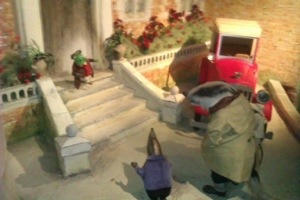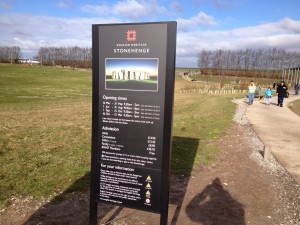 On our first free day this year, we decide to head to Stonehenge. I discovered that our National Trust membership was still valid and it gives us entry to the English Heritage site of Stonehenge. The last time that we visited as a family was on New Year’s Day in 2007. The Tribe was one less; the Eldest had just finished her first term at school and they were all very, very little. It seems like a lifetime ago. Since then, although the stones themselves have obviously remained unchanged, a rather magnificent glass visitor’s centre has been built together with a museum and some Neolithic huts. They still have the audio tour, but now have a family one that even the Littlest listened to quite intently, as we got onto the bus and headed towards the stones.
On our first free day this year, we decide to head to Stonehenge. I discovered that our National Trust membership was still valid and it gives us entry to the English Heritage site of Stonehenge. The last time that we visited as a family was on New Year’s Day in 2007. The Tribe was one less; the Eldest had just finished her first term at school and they were all very, very little. It seems like a lifetime ago. Since then, although the stones themselves have obviously remained unchanged, a rather magnificent glass visitor’s centre has been built together with a museum and some Neolithic huts. They still have the audio tour, but now have a family one that even the Littlest listened to quite intently, as we got onto the bus and headed towards the stones.

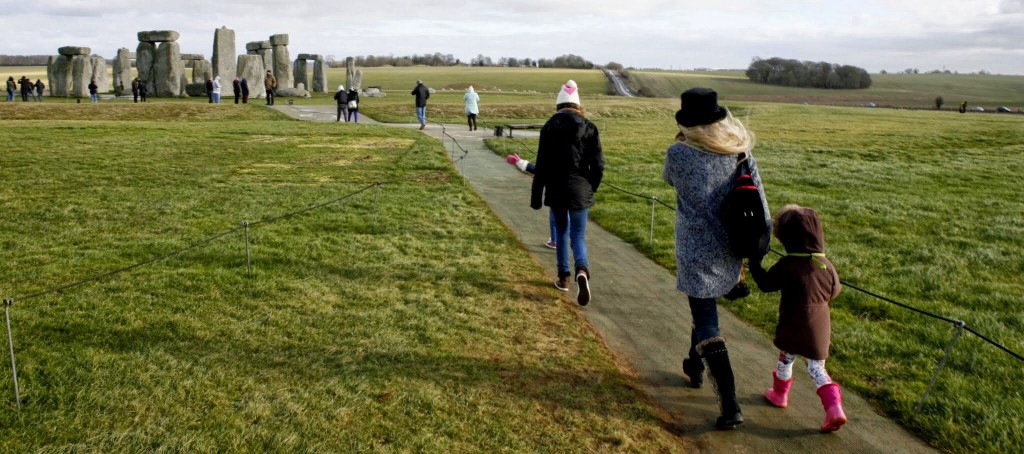 Stonehenge must be one of the most well known sites in the world and it is still truely spectacular. Whenever we pass it going along the A303 it never ceases to amaze us all. A circular ditch and bank runs around the stones and are believed to have been the first Stonehenge monument, built about 3,000BC during the Neolithic age. When it was first dug out, the chalk underneath would have meant that the ditch would have been bright white making it extremely prominent on the landscape, enabling it to have been seen from some distance. Red dear antlers, used as pick axes, have been found in the ditch and have been carbon dated to between 3000 and 2920BC. Extraordinarily, excavations that were carried out within the stone circles in 2008, produced dates ranging from the Mesolithic period (8000BC) to Roman and later. Amazing!
Stonehenge must be one of the most well known sites in the world and it is still truely spectacular. Whenever we pass it going along the A303 it never ceases to amaze us all. A circular ditch and bank runs around the stones and are believed to have been the first Stonehenge monument, built about 3,000BC during the Neolithic age. When it was first dug out, the chalk underneath would have meant that the ditch would have been bright white making it extremely prominent on the landscape, enabling it to have been seen from some distance. Red dear antlers, used as pick axes, have been found in the ditch and have been carbon dated to between 3000 and 2920BC. Extraordinarily, excavations that were carried out within the stone circles in 2008, produced dates ranging from the Mesolithic period (8000BC) to Roman and later. Amazing! 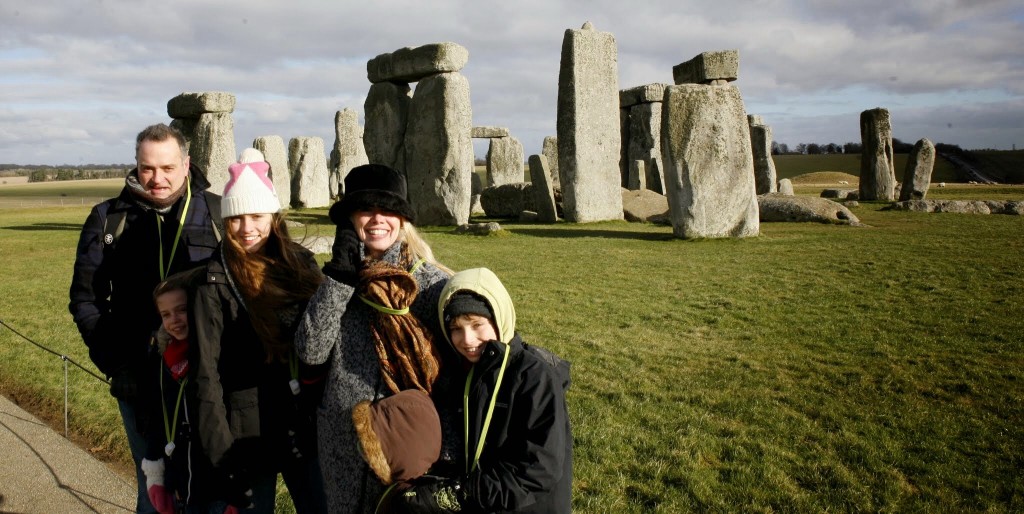 Just inside the edge of the bank, 56 large circular pits, found originally by John Aubrey in the 17th Century (hence their name ‘Aubrey Holes’) were found to contain cremated human bones dated about 3000BC. It is therefore believed that very early on, Stonehenge was a cemetary. In 2008 the cremated bones were re-excavated and appear to be the remains of about 60 people – men, women and children. In 1976, an excavation in the ditch found a skeleton dating to 2300BC. It is believed that it belonged to a man aged about 30 who met a violent death – arrowheads were sticking into his bones. His buriel however, was careful as flint arrowheads were buried next to him and he wore an archer’s stone wrist protector. Perhaps he was killed as part of a sacrifice. He is now known as the Stonehenge Archer and his remains are at the Salisbury Museum. A rainy day visit I think.
Just inside the edge of the bank, 56 large circular pits, found originally by John Aubrey in the 17th Century (hence their name ‘Aubrey Holes’) were found to contain cremated human bones dated about 3000BC. It is therefore believed that very early on, Stonehenge was a cemetary. In 2008 the cremated bones were re-excavated and appear to be the remains of about 60 people – men, women and children. In 1976, an excavation in the ditch found a skeleton dating to 2300BC. It is believed that it belonged to a man aged about 30 who met a violent death – arrowheads were sticking into his bones. His buriel however, was careful as flint arrowheads were buried next to him and he wore an archer’s stone wrist protector. Perhaps he was killed as part of a sacrifice. He is now known as the Stonehenge Archer and his remains are at the Salisbury Museum. A rainy day visit I think.
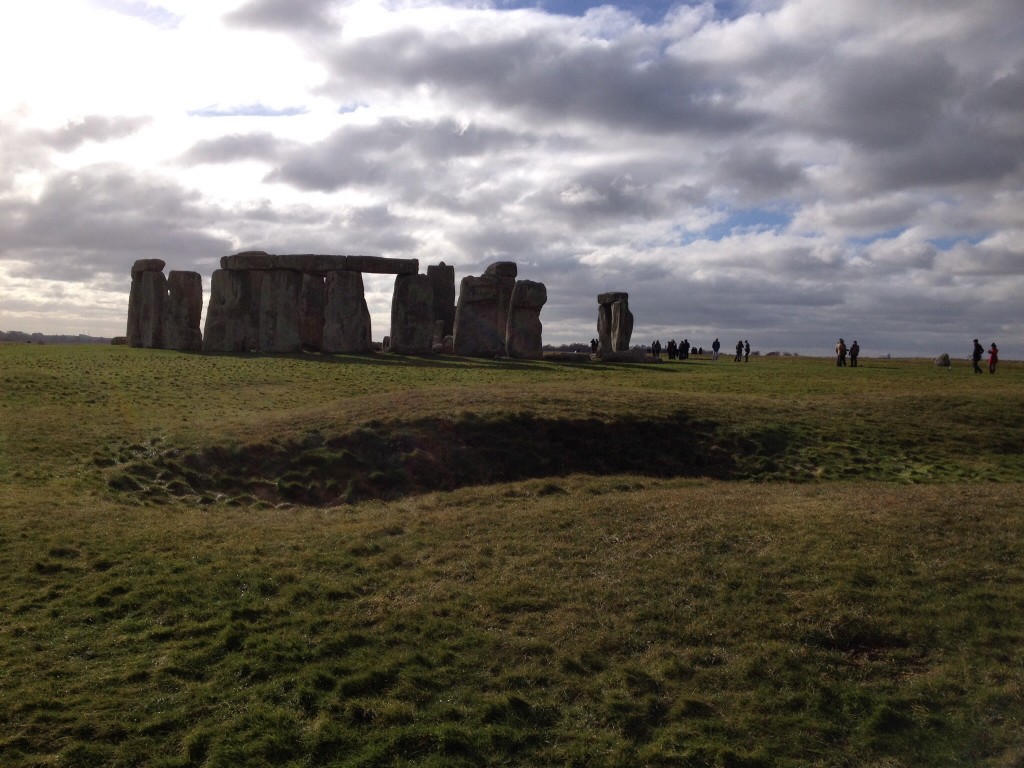
The stones themselves were put in place about 500 years after the ditch and bank were built, in horseshoe and circular shapes. The largest stones are sarsens – a type of very hard sandstone and it is believed that they came from the Marlborough Downs in North Wiltshire, 30km away. The smaller stones, bluestones, came from the Preseli Hills. In Wales. That’s 240km away. And,, it seems that there is absolutely no doubt of their origin. The mineral composition of Stonehenge’s stones exactly matches samples from the Preseli Hills. The sarsen stones are believed to have been dragged on simple wooden rollers with a team of about 200 people.  At the visitor’s centre, there is a replica stone on rollers with a thick, heavy rope attached – you can attempt to pull it and it then shows how many of you it would take. The stone obviously doesn’t move a millimetre. It does make you realise what an incredibly undertaking it was. The Tribe are suitably impressed.
At the visitor’s centre, there is a replica stone on rollers with a thick, heavy rope attached – you can attempt to pull it and it then shows how many of you it would take. The stone obviously doesn’t move a millimetre. It does make you realise what an incredibly undertaking it was. The Tribe are suitably impressed.

How the bluestones got to Stonehenge is not so clear. Some think that perhaps glaciers in the last ice age left bluestones on Salisbury Plain, but there is no geographical evidence for this, so it is now generally accepted that it was human transport that moved them. The first part was by land with the final part probably by water, along the Bristol Channel and then the River Avon which runs close to Stonehenge. How the stones were raised and the lintels raised into position is also not known for sure – there has been no archeological evidence to support any theory. Whatever the method used, it is still an awesome feat given the fact that the tallest stone is 5 metres high and the heaviest over 35 tonnes.
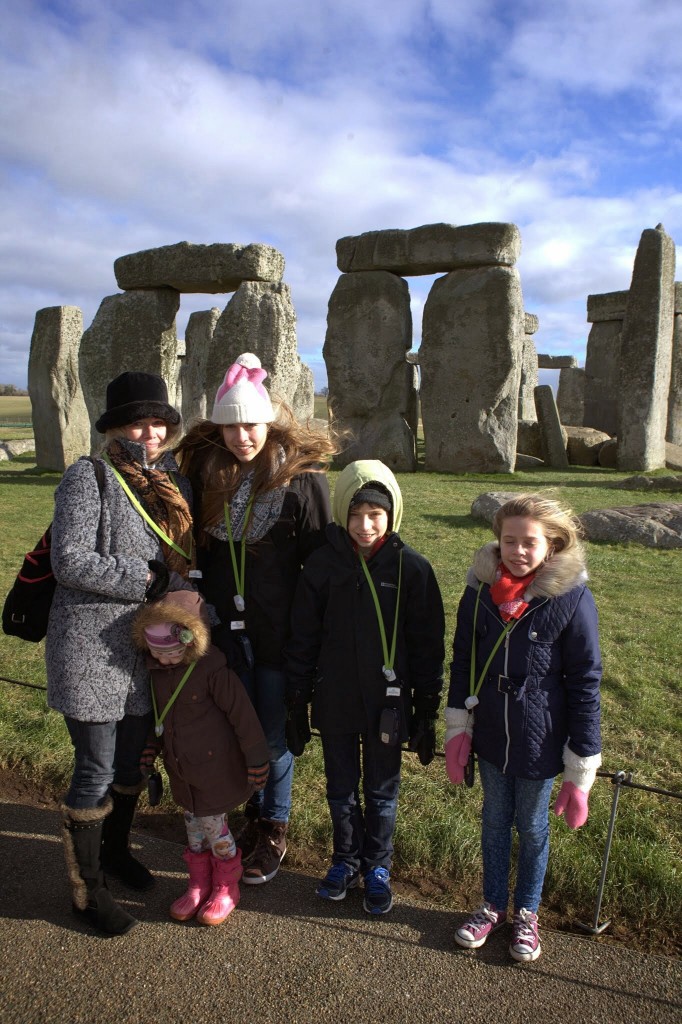
Once upon a time, when I was at primary school, I remember vividly a school trip taking me to Stonehenge for the first time. Somewhere there is a photograph of me with my best friend; two little girls in summer uniform with their hair in pigtails, standing next to one of the immense stones. Now, of course, the stones are roped off and only on one day in the calendar year, are you able to walk freely among the stones – the Summer Solstice.
The way in which the stones were placed all those year ago, is extraordinary. On the summer solstice, the longest day of the year, 21 June, as the sun rises and on the winter solstice, the shortest day of the year, as the sun sets, the sun shines in a line through the middle of the stones. It is believed that people came to Stonehenge to celebrate the sun, holding feasts, particularly at the winter solstice, which is now believed to be the more important of the two solstice – praying for longer days, light and warmth.
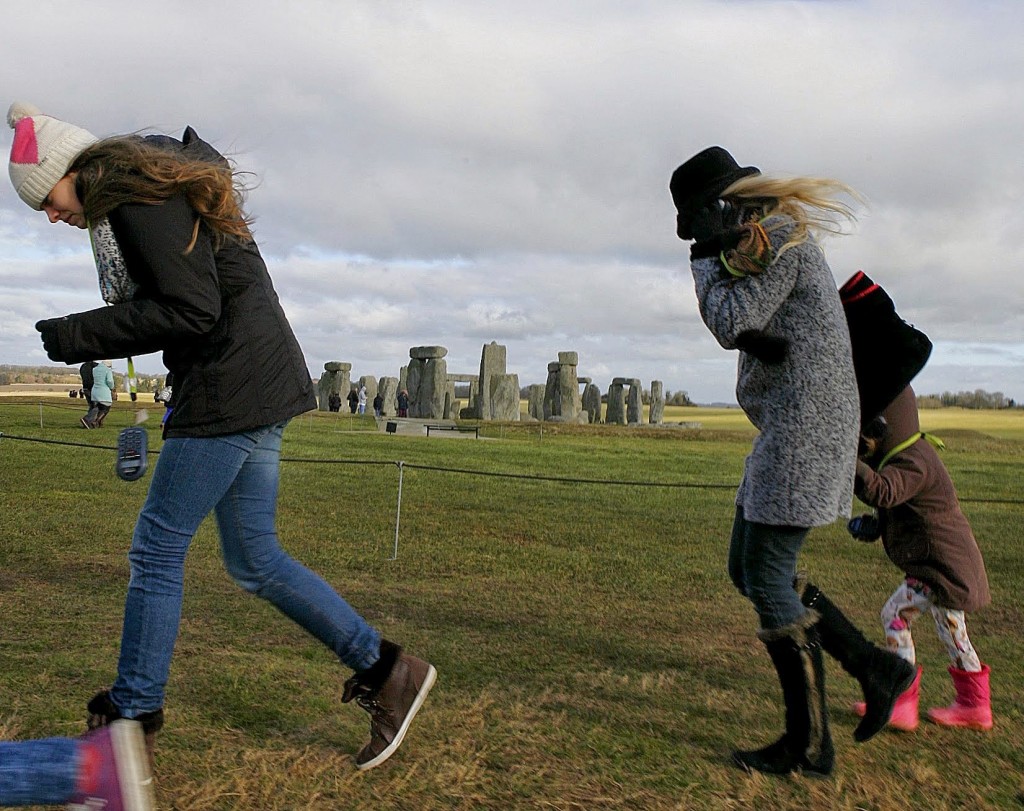
As you can see from the photographs, it was a ridiculously windy, bitterly cold day – it was miraculous that the Littlest didn’t get swept away, but it does explain why her head is buried into herself in almost every photograph! The Tribe loved the visit expecially the Boy who really immersed himself in the extraordinary history of Stonehenge. I also love the fact that even in the 21st Century, when there seems to be an answer for everything, there are still mysteries that continue to allude even the most brilliant archeologists, scientists and historians. Stonehenge still holds so many secrets and we will return again to discover and learn more – perhaps on a rather warmer day.


